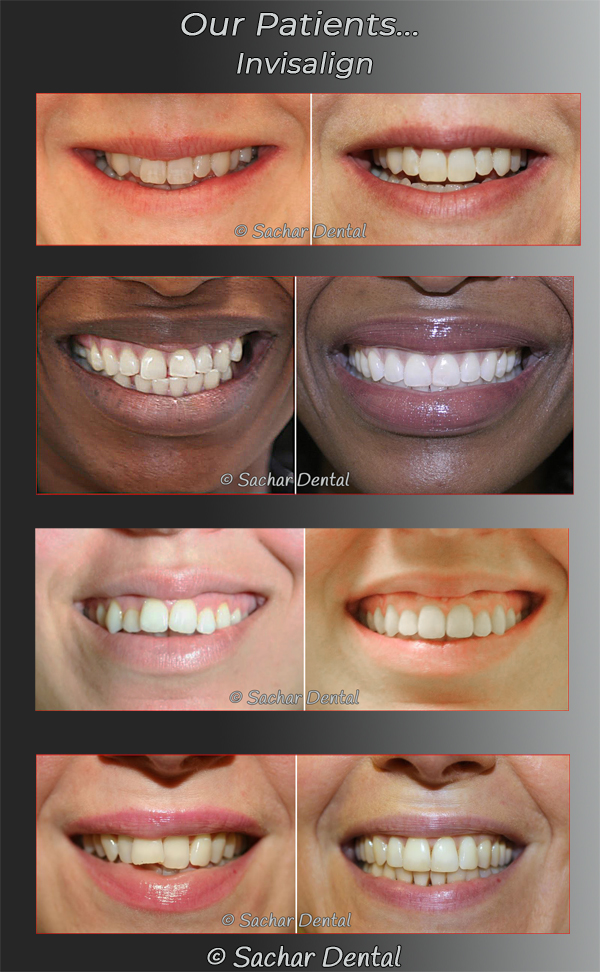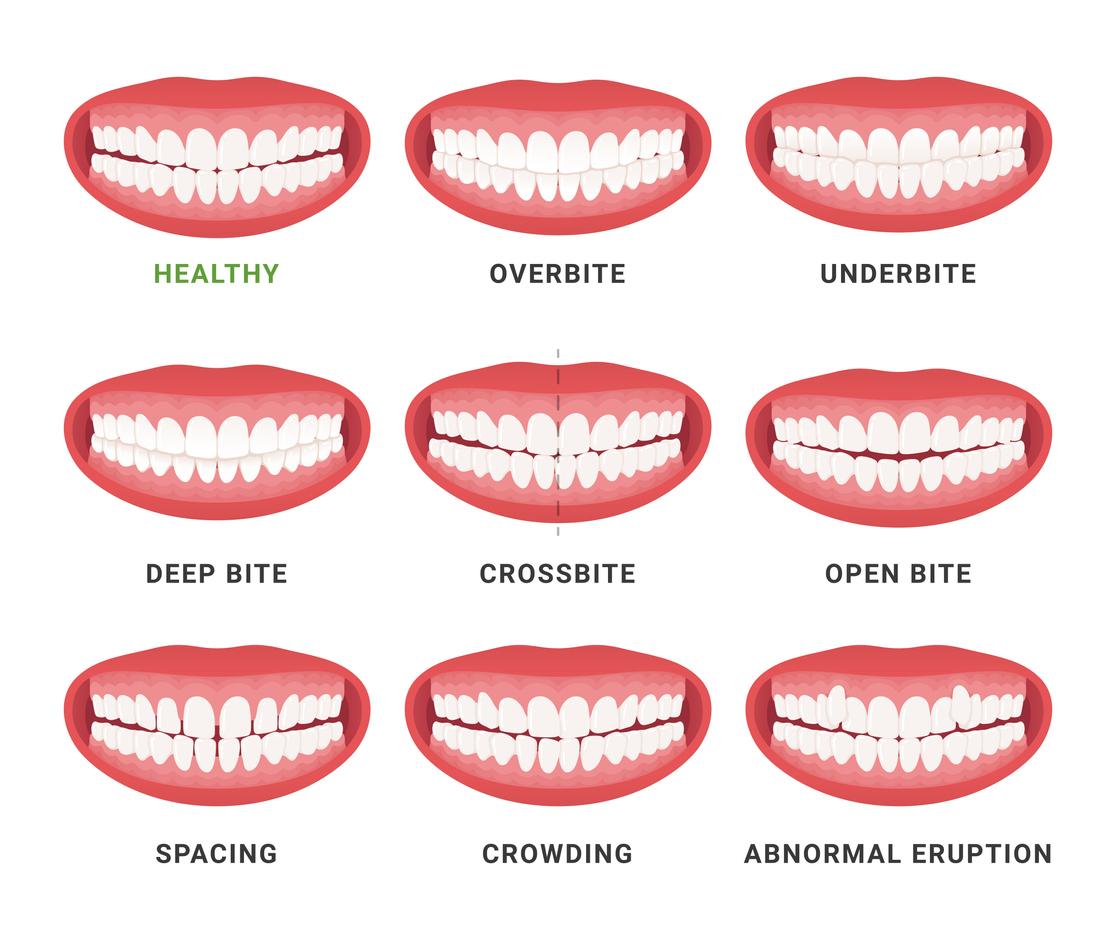Invisalign vs. Traditional Braces: Which Option Is Right for You?
When considering orthodontic therapy, the option between Invisalign and typical dental braces presents numerous vital variables that merit mindful examination. Invisalign offers a very discreet alternative with detachable aligners, while conventional dental braces offer an extra visible yet effective remedy for severe imbalance. Each option includes distinctive benefits and downsides associated with aesthetics, convenience, therapy period, and cost. Recognizing these nuances is essential for making an educated decision that straightens with your personal preferences and way of living. The inquiry remains: which option will ideal meet your orthodontic requirements and assumptions?
Introduction of Treatment Choices

In contrast, standard braces contain metal brackets and cords that are adhered to the teeth. This method uses continuous stress with time to achieve positioning. While reliable for intricate orthodontic concerns, traditional braces need normal gos to for modifications and can position difficulties in keeping dental hygiene due to the difficulty of cleansing around brackets and wires.
Both choices have their benefits, and the option usually rests on specific dental conditions, lifestyle choices, and person conformity. Eventually, speaking with an orthodontic expert is crucial for establishing one of the most ideal therapy strategy customized to specific demands. Recognizing the subtleties of each choice can substantially affect the total success of orthodontic treatment.
Visual Factors To Consider
A substantial factor influencing the choice in between Invisalign and typical dental braces is the aesthetic charm each therapy provides. Invisalign aligners are crafted from clear plastic, making them practically invisible when put on. This very discreet look is specifically attracting adults and teenagers who may really feel awkward regarding their orthodontic treatment. The capacity to preserve a natural smile throughout the alignment procedure can substantially enhance the patient's self-confidence in expert and social settings.
In comparison, typical braces contain metal braces and wires, which can be extra visible. While innovations in orthodontic technology have caused the development of smaller braces and tinted elastics, traditional braces still preserve an even more conspicuous profile. For some people, the presence of dental braces might discourage them from seeking essential therapy.
Ultimately, the option between Invisalign and conventional braces might pivot on personal preferences pertaining to visual appeals. Individuals that focus on discernment often favor Invisalign, while those that are much less worried concerning presence might decide for conventional braces. Comprehending the aesthetic ramifications of each choice is critical for making an informed decision that aligns with one's lifestyle and preferences.
Comfort and Convenience

In terms of benefit, Invisalign aligners are removable, allowing clients to enjoy their preferred foods without limitation and preserve ideal oral hygiene. Cleaning and flossing are streamlined, as the aligners can be secured throughout these routines, whereas conventional braces require careful navigating around cords and braces.
In contrast, traditional dental braces go to this site necessitate normal modifications, making them less hassle-free for those with hectic schedules. Generally, the comfort and ease of Invisalign make it an attractive choice for lots of individuals looking for orthodontic treatment.
Treatment Period and Efficiency
While both Invisalign and standard braces are efficient in correcting dental imbalances, the duration of treatment can differ dramatically between the 2 options. Normally, Invisalign treatment can take anywhere from 12 to 18 months, depending upon the intricacy of the situation. The clear aligners function by gradually moving teeth right into their desired settings, and routine follow-ups with an orthodontist help make sure progress remains on the right track.
In comparison, traditional braces often need a longer dedication, generally ranging from 18 months to three years. This is because of their fixed nature and using brackets and wires, which can be a lot more reliable for intricate instances and severe misalignments (Invisalign). The treatment effectiveness of conventional dental braces is well-documented, as they enable precise changes and better control over tooth movement
Ultimately, the selection between Invisalign and traditional dental braces might depend upon both the awaited therapy period and the details oral concerns handy. Consulting with an orthodontist is critical, as they can give customized suggestions based upon informative post private requirements, making sure the selected method aligns with wanted timeframes and end results.
Price Contrast and Insurance Coverage Options
Price plays a substantial function in the decision-making process for people taking into consideration orthodontic treatment, whether going with Invisalign or typical dental braces. Generally, the cost of Invisalign arrays from $3,000 to $8,000, while standard braces typically set you back between $2,000 and $6,000. Variables influencing these prices include the intricacy of the situation, the duration of therapy, and geographical location.
Insurance policy protection can considerably impact out-of-pocket expenditures. Numerous oral insurance coverage plans supply partial coverage for orthodontic therapies, however the specifics can differ commonly. It is crucial for individuals to evaluate their insurance policy policies to figure out the extent of protection for either option. Normally, traditional braces might be extra often covered More Info by insurance policy plans compared to Invisalign, which some insurers categorize as an aesthetic treatment.
Additionally, several orthodontic techniques use flexible payment strategies, making both treatment alternatives more easily accessible. Patients need to make inquiries regarding potential funding options and discount rates for upfront settlements. Assessing the complete price, including insurance benefits and layaway plan, is necessary for making an educated choice that lines up with both visual choices and budget plan factors to consider.

Conclusion
In recap, the choice in between Invisalign and conventional dental braces rests on numerous elements, including aesthetic preferences, convenience, therapy period, and cost. Invisalign uses a very discreet, removable alternative that assists in dental hygiene and nutritional versatility, while typical braces may be better for complicated dental problems and usually come with a lower price factor. Eventually, examination with an orthodontist is necessary to examine private situations and figure out the most ideal therapy option for attaining optimum oral positioning.
When taking into consideration orthodontic treatment, the choice between Invisalign and typical dental braces offers a number of crucial aspects that merit careful evaluation.Contrasting Invisalign and typical dental braces reveals distinct treatment choices for orthodontic correction.While both Invisalign and standard dental braces are reliable in correcting oral misalignments, the period of treatment can vary significantly in between the two choices.Cost plays a significant role in the decision-making process for individuals considering orthodontic treatment, whether opting for Invisalign or standard braces.In recap, the option in between Invisalign and standard braces hinges on several variables, consisting of aesthetic choices, convenience, therapy duration, and expense.